How building regulations may affect garden walls
Any walls that are not part of a house or extension are unlikely to be controlled by building regulations unless these provide support to the foundations of another building.
Many local councils will have restrictions on the height of walls and fences and you should check with your local Planning team before you start any work. General planning advice can be found here.
Building regulations approval is not generally required for landscaping but beware that if you are removing large amounts of earth you may need to build a retaining wall and you will need advice from a competent structural engineer.
These garden walls, when built well to the correct standards, can provide an attractive and safe environment with the aims of improvements in security and privacy; however, LABC teams across the UK do get called out to too many incidents where existing garden walls fail and present a danger to the public.
Collapsed boundary wall. Picture courtesy of structural-safety.org
If you build a retaining wall within 3.7m of a street, the Highways Act 1980 requires you to seek approval from the local authority or if the road is adopted from the relevant Highway Authority.
Whilst retaining walls and freestanding walls may not require building regulation approval there is guidance to ensure they are built to a good standard.
Retaining walls (up to a maximum height of 1.725m)
Retaining walls can be tricky to build as they need to be strong enough to resist horizontal soil pressure where there are differing ground levels. One of the things you must get right is the thickness of the wall.
Whilst retaining walls should be designed by a competent structural engineer, BRE has useful guidance which provides rules of thumb for thicknesses of walls up to a maximum retained height of 1.725m.
Image courtesy of BRE Good Building Guide GBG 27 – building brickwork or blockwork retaining walls, November 1996
Important points about retaining walls:
- You also need to consider the effect of ground water, which can create huge pressure on the wall and soak the brickwork if allowed to accumulate behind. Create a way out for the water by adding a gravel trench and pipes through the wall.
- If not properly constructed, water can also penetrate the brickwork structure from above through the mortar joints, affecting the long-term durability of the retaining wall. So add capping/copings, which must always be F2, S2 (frost-resistant low soluble salts), with an overhang and drip groove to minimise water damage.
- Use a high-bond damp proof course below the capping/coping and sandwich the DPC in mortar.
- Don't forget to include movement joints in the wall. These should be continuous for the full height of the wall. For lateral stability, slip ties should be incorporated at movement joints and wherever a freestanding wall abuts a building.
- Waterproof the retaining side of the wall and allow water to drain away from this side through weep holes/pipes.
- Slope paving away from the wall and provide gravel drainage strips where possible.
- Don't forget to protect waterproofing from damage while you’re building.
Free-standing walls
The Department for Levelling Up, Housing and Communities (DLUHC) has useful guidance on free-standing garden walls.
Image courtesy of gov.uk
The zone diagram/table is based on wind speed distribution across the UK, reflecting the strength of wind the further north and west the wall is being built.
The heights and widths for these walls may not apply if the wall is:
- Adjacent to a vehicle access area
- Adjacent to a public right of way
- Where busy traffic areas are likely
- Close to a medium (4 storeys) or high-rise building (nearer than a distance equal to the height of the building)
- On the crest of a hill or where the slope of the ground is greater than 1:10
- Near an extensive hill or mountain range
- Intended to support a large gate or door
- Where the sub soil is soft (soft clay or peat) or unstable (e.g. poorly compacted filled ground)
- Where the difference in ground level between each side of the wall exceeds twice the wall thickness
Further reading
- The Institute of Structural Engineers has information about preventing the collapse of free-standing masonry walls (cross-safety.org) (PDF format)
- BRE Good Building Guide GBG 27 – building brickwork or blockwork retaining walls, November 1996, Building Research Establishment, ISBN 1-86081-105-1, Published by IHS-BRE.
- BRE Good Building Guide GBG 13 – Surveying brick or blockwork freestanding walls, April 1992, Building Research Establishment, ISBN GG13, Published by IHS-BRE.
- BRE Good Building Guide GBG 14 – Building simple plan brick or blockwork freestanding walls, Mat 1994, Building Research Establishment, ISBN GG14, Published by IHS-BRE.
- Brick Development Association.
- The do's and don'ts of freestanding brick walls.
- The danger of free-standing walls.
Please Note: Every care was taken to ensure the information was correct at the time of publication. Any written guidance provided does not replace the user’s professional judgement. It is the responsibility of the dutyholder or person carrying out the work to ensure compliance with relevant building regulations or applicable technical standards.
This article was reviewed and updated on 10 August 2023
Sign up to the building bulletin newsletter
Over 48,000 construction professionals have already signed up for the LABC Building Bulletin.
Join them and receive useful tips, practical technical information and industry news by email once every 6 weeks.
Subscribe to the Building Bulletin
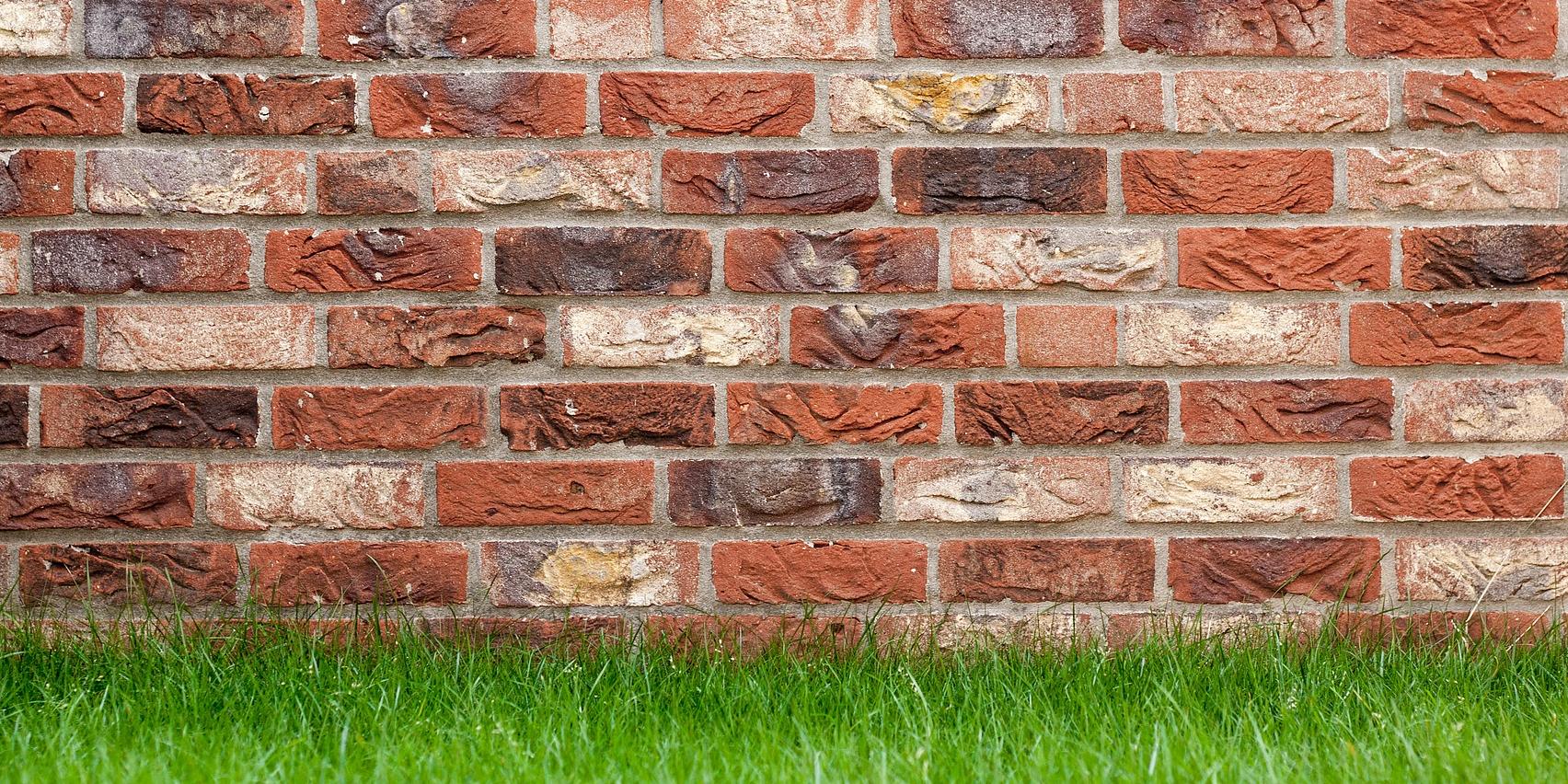
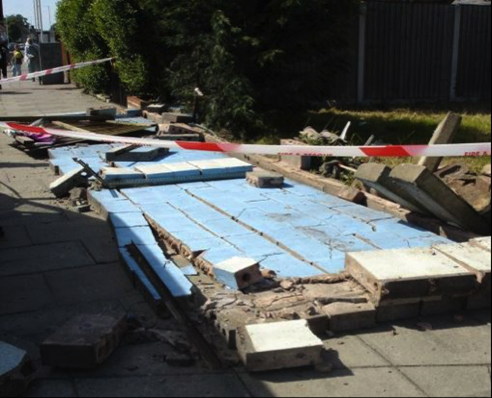
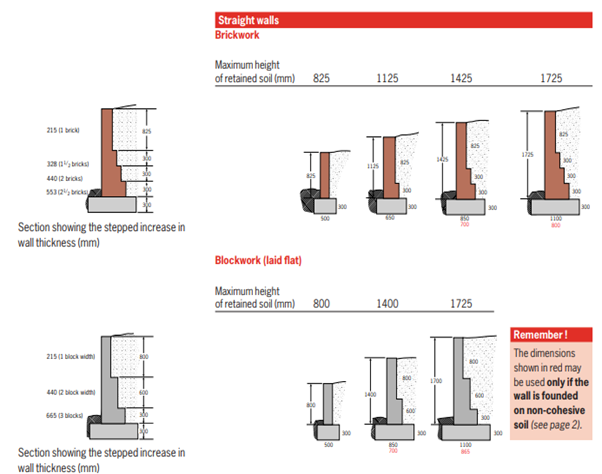
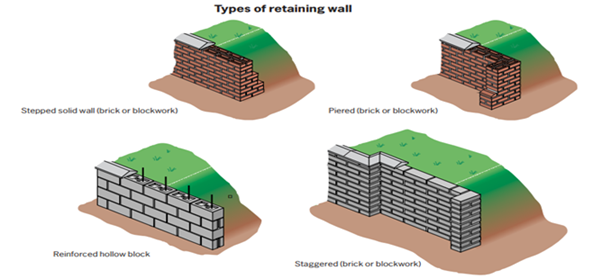
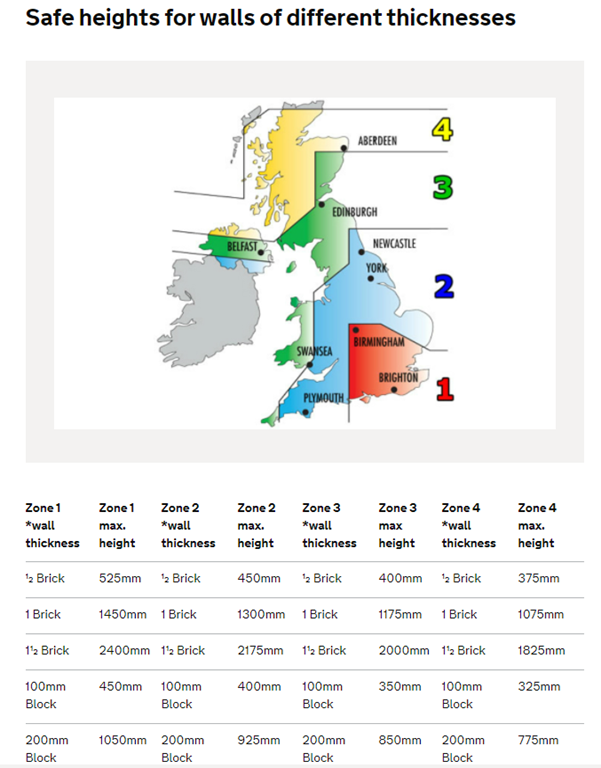
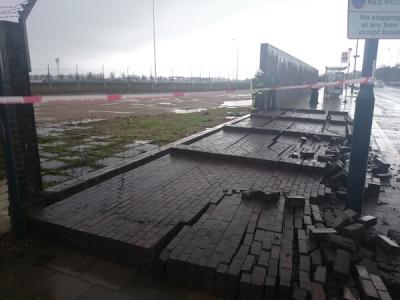
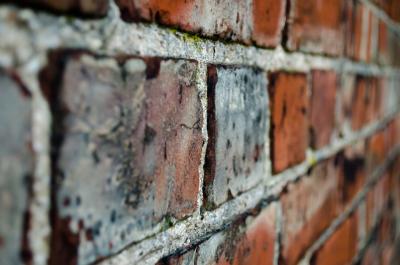
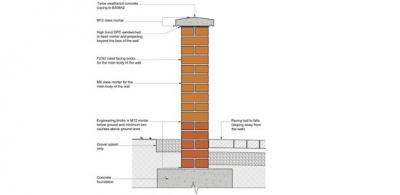
Comments
Boundary wall and Pillars
Submitted 1 year 10 months ago
My neighbour is having a garden wall built that he said to us, it would only be 1 brick thick and would be on his side of the boundary (his boundary).
I've come home today to find the wall now has pillars that although are still on his side of the boundary line (up against boundary) they are facing our garden whilst he gets a lovely smooth finish his side. (He has also done the same to the neighbours the other side).
As he wanted to build the wall and we agreed to a single brick thick (nothing mentioned of pillars) are these pillars allowed to be facing our side so we have to look at the mess or should they be on his side? I was always under the impression the neighbours should get priority over the better looking side/finish.
To add to this, his side the bricks have all been finished off nicely however, our side the bricks are all angled, chipped (reclaimed bricks) and generally not finished off well.
My concern is a smooth finish our side without any pillars is what was agreed and having pillars every 2metres causes a risk to our very young children who could fall against the rough edges of the bricks built into the pillars.
Thanks
LABC Response
Submitted 1 year 10 months ago
The following response is my opinion on behalf of LABC, it is not a definitive interpretation of the legislation and remains a matter for the relevant enforcing authority to determine.
In general, any walls that are not part of a house or extension are unlikely to be controlled by building regulations unless these provide support to the foundations of another building. Furthermore, even if the wall in question was controlled under the Building Regulations, the requirements it would have to achieve relate to its functional performance (i.e., is it built safely to carry the loading, etc) rather than its aesthetics.
However, some boundary walls require planning approval if certain conditions are not met (for example, if the wall exceeds a certain height or forms part of a curtilage of a listed building) - for more information about this you may find it useful to read www.planningportal.co.uk/permission/common-projects/fences-gates-and-garden-walls/planning-permission.
Furthermore, the works may be defined as a ‘party fence wall’ for the purposes of the Party Wall Act 1996; in which case, this legislation may provide a mechanism for legal re-dress. See paragraphs 22 to 26 in the Party Wall etc Act 1996 Explanatory Booklet available at www.gov.uk/government/publications/preventing-and-resolving-disputes-in-relation-to-party-walls/the-party-wall-etc-act-1996-explanatory-booklet. If you wish to proceed down this route, it would be highly advisable to seek the services of a competent Party Wall surveyor beforehand.
Kind regards,
LABC
Retaining Wall
Submitted 1 year 7 months ago
LABC Response
Submitted 1 year 7 months ago
Thank you for your enquiry.
LABC provides general information relating to Building Regulations, we cannot comment on specific cases and therefore you will need to contact the Local Authority where you live to check to see if Planning Permission is required.
Best,
LABC Team
Collapsing boundary wall
Submitted 1 year 7 months ago
LABC Response
Submitted 1 year 7 months ago
Thank you for your enquiry.
An external garden wall that you describe is not controlled under building regulations, however the walls would be expected to be built to the standards in our article in terms of “good practice”. We would therefore suggest this is a civil matter and you should seek advice from your engineers in terms of resolution to the issue.
Best,
LABC Team
Wall forming boundary to a public footpath
Submitted 1 year 7 months ago
LABC Response
Submitted 1 year 6 months ago
In general terms, any existing wall or structure that is in a dangerous condition is the responsibility of the owner of that wall or structure. If the owner is the LA ( for example council housing) then they may have that responsibility, if the property is owned by any other party then that party has the responsibility.
Best,
LABC Team
Garden retaining walls
Submitted 1 year 7 months ago
The house is new-built in 2015. The same walls in the case of my neighbours are made of brick.
Who is responsible for putting them right please?
Large Retaining Wall
Submitted 1 year 7 months ago
The owner of higher land which uses 90% of the wall or the land owner at the bottom who only uses the wall as a boundary wall?
Also the wall is very old 150 years old and isn't thick enough to be a retaining wall, the higher owner but flats near the wall in 1994 and has also historically always repaired the wall.
Thank you
Add new comment